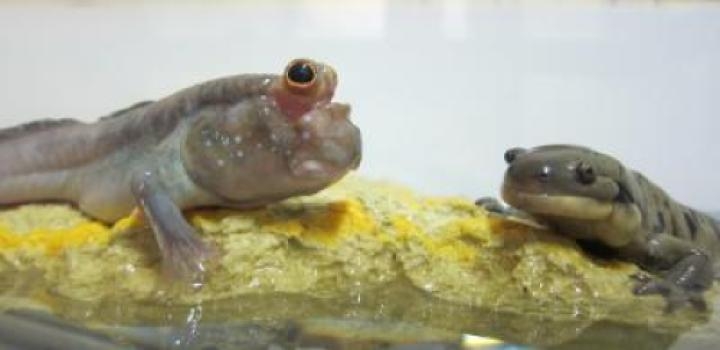Why did animals with limbs win the race to invade land over those with fins?
 A new study comparing the forces acting on fins of mudskipper fish and on the forelimbs of tiger salamanders can now be used to analyze early fossils that spanned the water-to-land transition in tetrapod evolution, and further understand their capability to move on land.
A new study comparing the forces acting on fins of mudskipper fish and on the forelimbs of tiger salamanders can now be used to analyze early fossils that spanned the water-to-land transition in tetrapod evolution, and further understand their capability to move on land.
Research conducted by Sandy Kawano and Richard Blob at Clemson University compared terrestrial locomotion in tiger salamanders and mudskipper fish, which have similar characteristics to early tetrapod ancestors.
The researchers filmed these organisms as they walked over a force platform which measures forces like a bathroom scale but separates them into 3 directions (upward, fore-aft, and side-to-side). They compared the forces experienced by the pectoral fins of the mudskipper fishes to the forelimbs and hind limbs of walking tiger salamanders. The results showed that that mudskippers’ pectoral fins experience more medial forces than the limbs of salamanders, and that the forelimbs could have a played a similar weight-bearing role as the hind limbs.
Sandy Kawano said: “The transition from fins to limbs marks the most dramatic change in orientation of the locomotor forces from contact with the ground. Using these data we can now evaluate the locomotor capabilities of numerous important fossil taxa that spanned the water-to-land transition in tetrapod evolution. We hypothesise that the medial orientation of the forces on pectoral fins would result in unreasonably high bone stresses in early amphibious fish with fins, which would explain why the evolutionary invasion of land by vertebrates was accomplished instead by tetrapods with limbs with digits.”
via The evolution of fins to limbs in the land invasion race — ScienceDaily.
Society for Experimental Biology. “The evolution of fins to limbs in the land invasion race.” ScienceDaily. ScienceDaily, 5 July 2013. <www.sciencedaily.com/releases/2013/07/130705212224.htm>.
Photo by: Sandy Kawano
